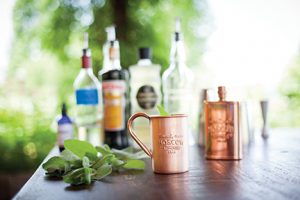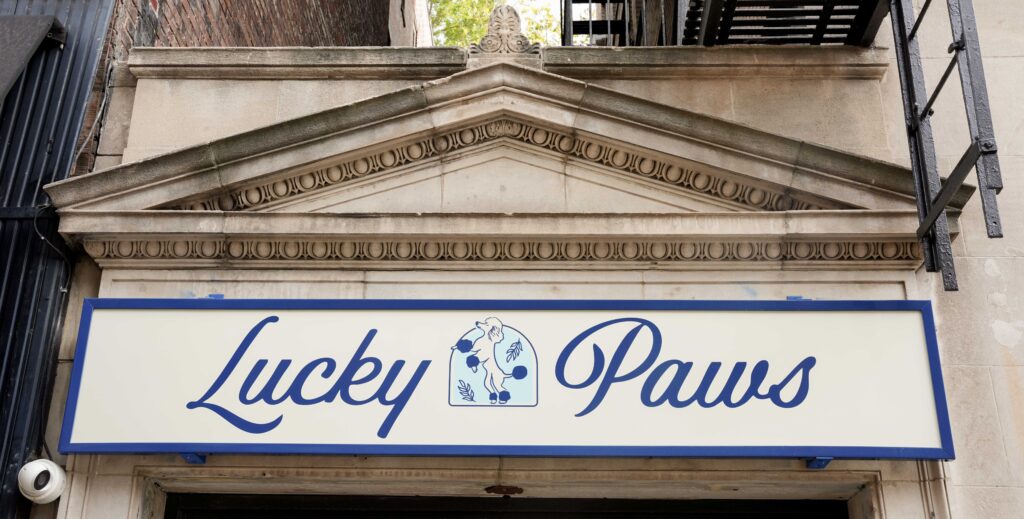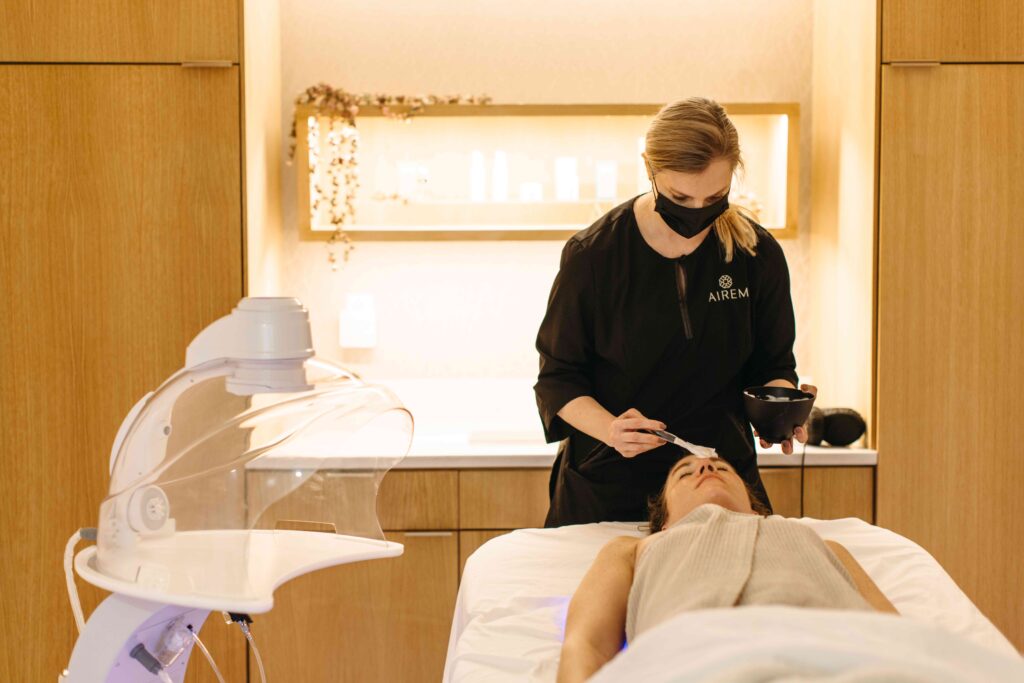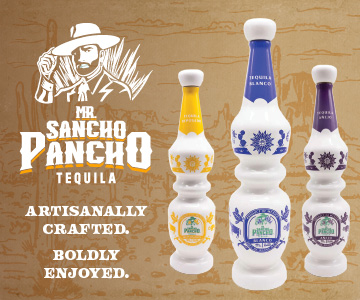Over the last decade, the methods of cocktail-making have transformed tenfold. Drop into any high-end bar or restaurant along the Hudson, and chances are there’s a few house-made cocktails on the menu, and I’m not talking about the Cosmopolitans and Manhattans our parents drank. Similar to the way chefs have put the spotlight on incorporating fresh and localized ingredients, mixologists are utilizing more produce.
Bartenders everywhere are creating original craft cocktails and even putting their own unique twists on some old favorites. The industry itself has literally gotten back to its roots, a huge part of which is focusing on great service; there’s simply a larger emphasis on hospitality than there was just 10 years ago. Carlos Ruiz, Director of Spirits and Mixology for Crystal Springs Resort in Hamburg, NJ, stated that quality housemade syrups and a little personality can go a long way. And it is this sort of thinking that has undoubtedly helped set things apart from the bar programs of yesteryear. “A lot of bartenders get so focused on the craft that they forget that the industry is all about hospitality,” he said. “Even in [cocktail] competitions, the judges look at personality a lot. Aside from making a good drink, you just can’t forget about hospitality.”
Ruiz, who emigrated from Peru to the U.S. at the age of eight, began his career as a teenager working at The Ryland Inn in Whitehouse Station. Ruiz credits both his background in fine dining and his mentor, Christopher James, for helping him develop his hospitality skill set. Coincidently, The Ryland is also where he was first introduced to Anthony Bucco, Executive Chef of all dining at Crystal Springs Resort. Though he went on to develop bar programs at Washington House in Basking Ridge and Agricola in Princeton, at just 24 years old his path would ultimately lead him to Crystal Springs Resort. While Ruiz might’ve become one of the state’s top mixologists by dazzling both patrons and competition judges with his unique cocktails and charisma, he believes that it’s important for both bartenders and bar-goers alike to understand what makes a good drink. To ensure flavors don’t compete, Ruiz balances his cocktails by using ingredients that highlight what the spirit is made of. “Take gin for example, it’s made from juniper berries; so why not make a juniper syrup to highlight it rather than use other flavors that overpower the gin?” he explained. “Think of the main spirit first, gin is light so you’d go with light ingredients. If you’re using rum, you can go with heavier ingredients. Same thing with whiskey. The lighter the spirit color, the lighter ingredients you use.”
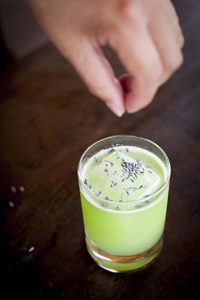 As such, one of the biggests parts of the recent cocktail renaissance are the ingredients. Mixologists are utilizing local, fresh produce and are skipping on extra added sugars and flavors in favor of custom mixes and bitters. For bartenders today, fresher ingredients mean better cocktails. Ruiz and his staff abide by this, sourcing the bulk of their produce right from the organic Chef’s Garden at Crystal Springs Resort. This, in part, is instrumental to helping Ruiz and his bartenders create new, delicious cocktails. “In the garden, I take anything that catches my eye. Something I do that maybe out of the ordinary is I light things on fire. For instance, I’ll light mint on fire to bring the smokiness out, and to create a more aromatic sense. I experiment to find what smells best together, then I’ll create a cocktail from that,” Ruiz explained. “If it tastes good, I keep developing it. It’s sort of my first step in creating something new. It might seem a bit backwards, but I like to get aromatics first then I taste.”When it comes down to it, the texture and smell of fresh rosemary or a carrot is just different than buying it. And for someone like Ruiz, who will pick fresh produce in the morning, it’s how things come full circle as he adds each ingredient to a cocktail. Ultimately, the ingredients also start a conversation with the customer and create an interaction, a conversation about the craft and everything that goes into it. And that of course, is where hospitality comes into play.
As such, one of the biggests parts of the recent cocktail renaissance are the ingredients. Mixologists are utilizing local, fresh produce and are skipping on extra added sugars and flavors in favor of custom mixes and bitters. For bartenders today, fresher ingredients mean better cocktails. Ruiz and his staff abide by this, sourcing the bulk of their produce right from the organic Chef’s Garden at Crystal Springs Resort. This, in part, is instrumental to helping Ruiz and his bartenders create new, delicious cocktails. “In the garden, I take anything that catches my eye. Something I do that maybe out of the ordinary is I light things on fire. For instance, I’ll light mint on fire to bring the smokiness out, and to create a more aromatic sense. I experiment to find what smells best together, then I’ll create a cocktail from that,” Ruiz explained. “If it tastes good, I keep developing it. It’s sort of my first step in creating something new. It might seem a bit backwards, but I like to get aromatics first then I taste.”When it comes down to it, the texture and smell of fresh rosemary or a carrot is just different than buying it. And for someone like Ruiz, who will pick fresh produce in the morning, it’s how things come full circle as he adds each ingredient to a cocktail. Ultimately, the ingredients also start a conversation with the customer and create an interaction, a conversation about the craft and everything that goes into it. And that of course, is where hospitality comes into play.
Equally as important for creating a good craft cocktail are the number of ingredients used. Over the last decade, we’re seeing fewer ingredients put into signature cocktails—and that’s a good thing. Instead, ingredients are usually kept to a maximum of four. “When I first got into mixology, I used to put like eight to nine ingredients in a cocktail,” Ruiz chuckled. “That wasn’t going so well. Because if you’re working at a really busy bar, you need to have it ready fast, especially if you’re in New York or New Jersey. Now I like to keep it to four ingredients.” Ultimately, the more simple the cocktail, the better it will be. But while Ruiz tries to accommodate his guests as much as possible, he still enjoys utilizing that one key ingredient that takes someone out of their comfort zone. “I use ingredients that people understand and throw one in there that’s a little different—a little curveball. You have to look at your audience, and for me, I look at the market here in NJ. I look for something that catches people’s eye. It’s interesting to introduce these new techniques to people, for me it’s been working.” Of course, presentation plays a role as well. When people see a drink that looks good, they’re going to order it, sometimes without even knowing what’s in it.
As we get into the heart of fall, Ruiz and his team will use more brown spirits in their cocktails, but with winter on the horizon, they’ll have to harvest as much fresh produce as possible while the season’s graces last. “I try to utilize as much as I can now from the garden before winter, but I’ll freeze whatever I can. Typically I’ll juice produce and freeze it for winter. I try to use as much natural sweetener as possible—even in the colder months,” he said. “It’s important to use what’s in season while you can.” In keeping with the season, Ruiz has created a new craft cocktail he calls Golden Fields, which utilizes Johnnie Walker Black, Jura wine, corn anglaise and lemon. Located between Burgundy and Switzerland, the Jura region of France—where the wine is created—offers a uniquely cool climate for oenology. “Jura wines are distinct and unusual wines. The most famous [is] Vin Jaune, which is made using a process similar to sherry, developing under a flor-like strain of yeast. This is made from the local savagnin grape variety,” he explained. Some of Ruiz’s favorite ingredients for fall include: blood oranges, root vegetables and his personal favorite, chicha morada, a purple corn native to Peru.
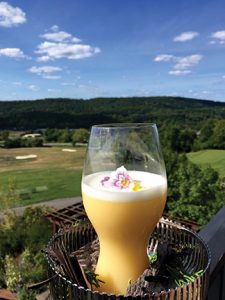
Golden Fields
1.5 oz. Johnny walker black
0.5 oz. yellow wine
1 oz. Corn anglaise
0.75. Lemon

